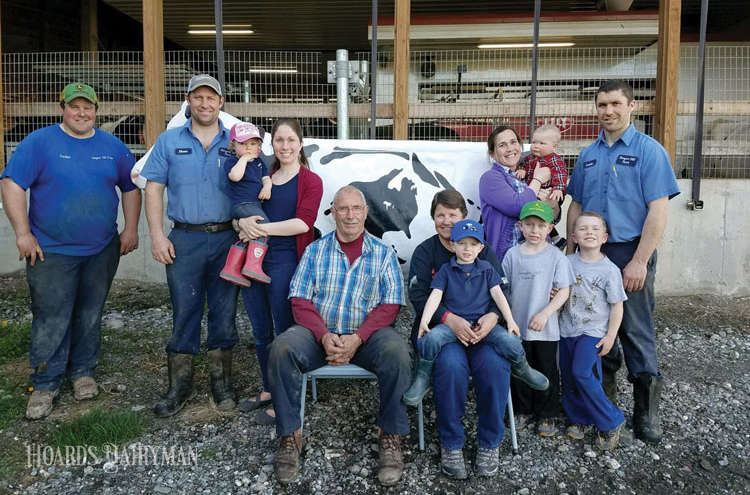
“In our breeding program, we try to maximize the potential of every mating,” explained Curtis Nolan. “Therefore, we don’t have one criteria that we follow but mate each cow individually depending on strengths and weaknesses. The next generation is the future of our herd, and we always want to be improving,” said the New York dairyman.
Nolan and his family milk 450 cows that run a strong 90-pound herd average. Half of the herd is milked in four robots. That group produces 96 pounds of milk per day.
“We most definitely breed specifically for all the milk production traits including pounds of milk, pounds of fat, and pounds of protein. We have always believed in breeding for production as well as type and enjoy working in a barn with cows that milk well, breed back, and are nice to look at,” Nolan continued.
Four farms that excel in milk production shared additional insights into feeding and breeding for a high-producing herd in this Hoard’s Dairyman Intel as well as the Round Table, “These farms feed for production” found on pages 82 to 84 of the February 10 issue of Hoard’s Dairyman.
Here are additional responses to the question, “What traits do you emphasize in your breeding program?”
Cold Run Jerseys, Salem, Ohio: We emphasize type in our breeding program. All mating sires must be positive for feet and legs, udders, and predicted transmitting ability for type (PTAT). We feel that milk production does not necessarily need to be bred for, but fed for.
We breed for a cow that has the ability to handle a lifetime of high production. High-producing cows take a significant amount of wear and tear and must be bred to withstand five to 15 years of the high stress that is related to high production.
Ever-Green-View Dairy, Waldo, Wis.: We aim to breed for a complete cow with emphasis on components, udders, and mobility. We try to never use negative production bulls.
Hillrose Dairy, Hillrose, Colo.: Breeding is chiefly left to the folks at Alta Genetics. They present the dairy with top bulls in their lineup and suggest matings based off of our cows. Typical qualities are considered, including milk, components, daughter pregnancy rate, longevity, and so forth. We tend to use a limited group of bulls and change out every two years or so.
Breeding is an important key to good milk production in our herd because fresh cows equal more milk. Most of the profit is made in the first 90 days, so we try to keep the lactation curve close to that mark.








